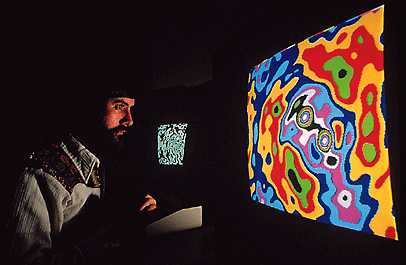A New Russian Eye in the Sky
Feb. 24, 2012
Russian scientists are beginning to examine the first images made by their country’s new RadioAstron space telescope, now the largest space telescope in Earth orbit. Launched with little fanfare in July 2011, the radio telescope has a collecting dish 33 feet (10 meters) wide. By comparison, the collecting mirror aboard the Hubble Space Telescope is 8 feet (2.4 meters) wide. The RadioAstron space telescope is funded and run by Russia’s Astro Space Center in Moscow and is part of an international network of ground-based radio telescopes spread around the world. The new space telescope will help astronomers view such objects as supermassive black holes in the center of distant galaxies, cosmic rays, dark matter, neutron stars, and new planetary systems. The telescope began science operations in December 2011.
Radio telescopes collect and measure faint radio waves given off by objects in space. Instead of the mirrors and lenses used in optical telescopes, radio telescopes use a large dish that looks much like a satellite dish. Numerous radio telescopes can be linked together, a technique called interferometry. With this technique, scientists can create a telescope equal to the distance between the telescopes. For example, a network of telescopes spread around Earth would have the power of one telescope with a dish the diameter of Earth, about 8,000 miles (12,800 kilometers) wide. The RadioAstron space telescope travels in a highly elliptical (oval) orbit around Earth. This orbit takes the satellite as far away as 240,000 miles (390,000 kilometers). At that distance, the linked telescopes have the power of one dish 240,000 miles wide–about the distance from Earth to the moon.

An astronomer studies an image produced by the Expanded Very Large Array of radio telescopes at Socorro, New Mexico. The colors in the "painting" represent different amounts of radio energy sent out by objects in the sky. National Radio Astronomy Observatory
Additional World Book articles:
- Astronomy
- Green Bank Telescope
- National Radio Astronomy Observatory
- Telescopes: 400 Years of Stargazing (A Special Report)


